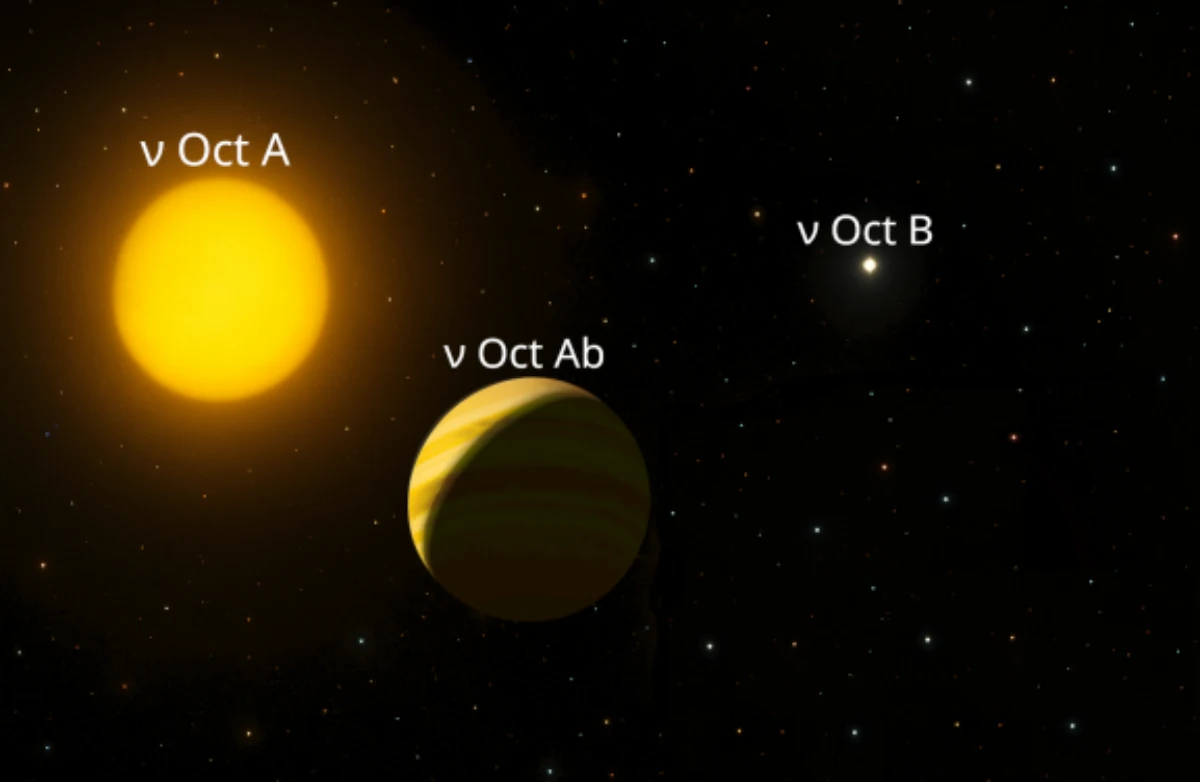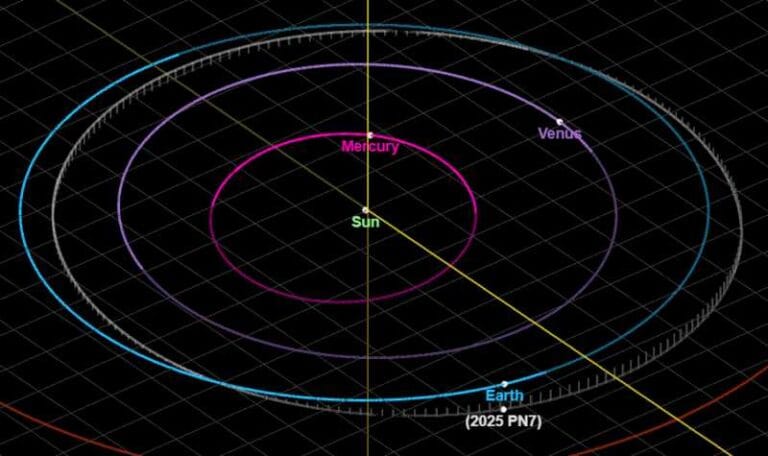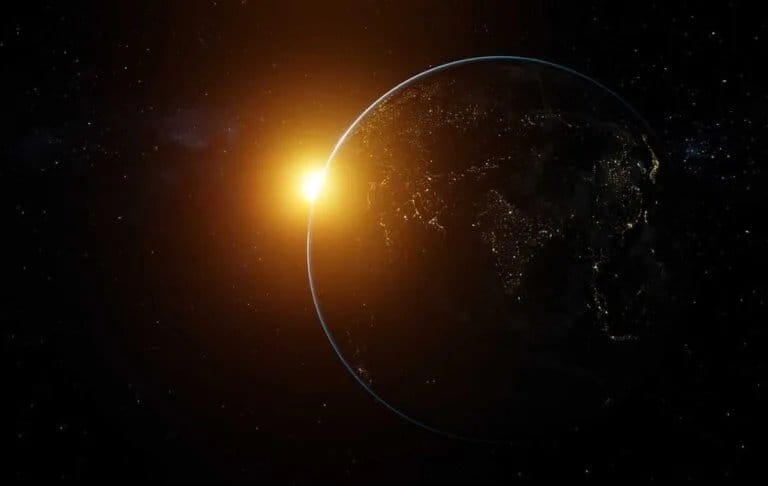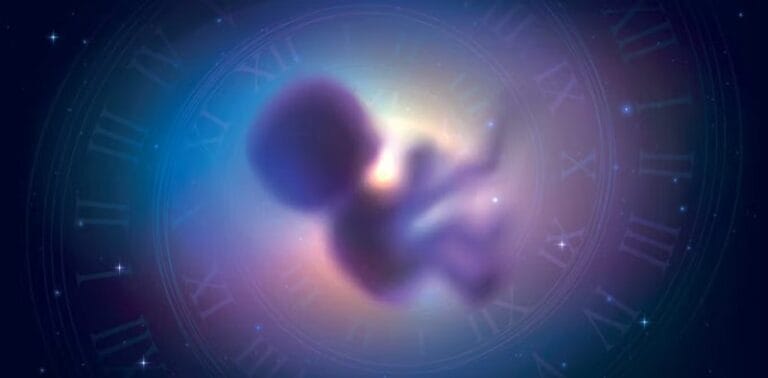Astrophysicists reveal link between binary stars and retrograde planet

Astrophysicists have recorded a unique case that defies classical models of planetary formation: a giant planet orbiting in the opposite direction to the movement of its binary star system. The discovery was made by an international team of astrophysicists, led by Professor Man Hoi Lee of the University of Hong Kong, and published in the journal Nature.
The system in question is nu Octantis, located in the constellation of Octans, about 69 light-years from Earth. It is made up of two stars: a subgiant called nu Oct A, with around 1.6 solar masses, and its companion nu Oct B, which has approximately half that mass.
The signal of a possible planet orbiting nu Oct A was first detected in 2004, during Dr. David Ramm’s PhD in New Zealand. Radial velocity measurements revealed a periodic oscillation consistent with a giant planet – about twice the mass of Jupiter – orbiting the star with a period of 400 days.
What made this possibility controversial was the stability of the orbit: it would only be viable if the planet moved in the opposite direction to the two stars – something never observed before.
This hypothesis was put to the test with new high-precision observations obtained using the HARPS spectrograph, installed on the European Southern Observatory’s (ESO) 3.6-meter telescope in La Silla, Chile.
“We analyzed new and archival data covering 18 years and found stable fits that require the planet’s orbit to be retrograde and nearly coplanar with the binary orbit,” explained Ho Wan Cheng, a master’s student at HKU and lead author of the study.
Another challenge of the research was to understand the nature of the bare secondary star Oct B. With its relatively low mass, it could be either a main sequence star or a white dwarf – a stellar remnant resulting from the collapse of a star with a mass similar to that of the Sun.
To resolve this doubt, the team used the SPHERE adaptive optics instrument attached to the ESO’s Very Large Telescope. The absence of visual detection confirmed that nu Oct B is an extremely faint white dwarf.
“We found that the system is about 2.9 billion years old and that nu Oct B initially had about 2.4 times the mass of the Sun, evolving into a white dwarf about 2 billion years ago,” explained Cheng. “Our analysis showed that the planet could not have formed around nu Oct A at the same time as the stars.”
The revelation that nu Oct B is a white dwarf has opened the way to new hypotheses about the origin of the retrograde planet. According to the researchers, it may have formed after the stellar evolution of nu Oct A’s companion.
“When nu Oct B evolved into a white dwarf about 2 billion years ago, the planet may have formed in a retrograde disk of material around nu Oct A, formed by the mass ejected from nu Oct B, or it may have been captured from a prograde orbit around the binary system into a retrograde orbit around nu Oct A,” explained Professor Man Hoi Lee.
The most radical hypothesis is that this is the first recorded case of a second-generation planet, i.e. formed from the remains of a star that has already gone through its collapse phase.
“We may be witnessing the first convincing case of a second-generation planet: captured or formed from material expelled by naked Oct B, which lost more than 75% of its original mass as it became a white dwarf,” added Dr. Trifon Trifonov, co-author of the paper and researcher at Heidelberg University and Sofia University.
Advertisement - Continue Reading Below
The research involved a combination of observational and modeling methods, essential for dealing with the complexity of the binary system and its gravitational interactions.
“The key to this exciting discovery was the use of several complementary methods to fully characterize the system,” said Dr. Sabine Reffert, also from Heidelberg University.
The study on nu Octantis reinforces the importance of investigating binary systems – especially those that have gone through advanced stages of evolution – as rich environments for understanding alternative forms of planetary formation. The presence of planets with retrograde orbits in these scenarios may indicate that the Universe is even more creative and unpredictable than previously thought.
Source: The University of Hong Kong






